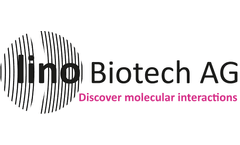Cell Based Assay Articles & Analysis
9 articles found
This synergistic approach allows for targeted delivery of the cytotoxic agent to cancer cells while sparing healthy tissues, thereby reducing side effects and enhancing therapeutic efficacy. ...
The cells can be used as model systems in phenotypic and drug screening, high content analysis, target identification, drug development, toxicology testing, gene editing studies, reporter assays. ...
For this kind of cellular analysis, simple biochemistry is insufficient, and cell-based assays are required; nevertheless, the specificity of the analysis enabled by biochemistry cannot be forgone, and in order to analyze cells with the same degree of molecule specificity, current cell-based ...
These Al-designed antibodies also exhibited a very high cross-binding hit rate against different Spike protein RBD region mutants in ELISA assay. The Al-designed antibodies were tested in vitro and demonstrated high potency against multiple strains in real virus neutralization assays. Methods and Data In the study of SARS-Cov-2, 1300 different historical ...
Abstract We previously generated 32 rotavirus-specific (RV-specific) recombinant monoclonal antibodies (mAbs) derived from B cells isolated from human intestinal resections. Twenty-four of these mAbs were specific for the VP8* fragment of RV VP4, and most (20 of 24) were non-neutralizing when tested in the conventional MA104 cell–based ...
We successfully integrated virtual screening methods and cell based assays into a simple, efficient procedure and identified compounds that interfere with the PCSK9-LDLR interaction. ...
We have successfully identified small molecule antagonists against PCSK9 through a virtual screen coupled with in vitro and cell-based assays. Our lead compound, P-4, exhibited a concentration-dependent inhibition of the PCSK9/LDLR interaction with an IC50 in the nanomolar range, an increase in the level of LDLR in recombinant ...
To that end, we have utilized a virtual screen approach coupled with cell-based assays to identify small molecule hits against the PCSK9 surface where the LDLR-EGF-A domain binds. ...
Furthermore, these compounds exhibited a 5- to 10-fold LDLR upregulation at 1.6 μM in two recombinant cell-based assays as well as exhibited an increase in the fluorescently labeled DiI-LDL uptake in situ in the nanomolar range. ...






